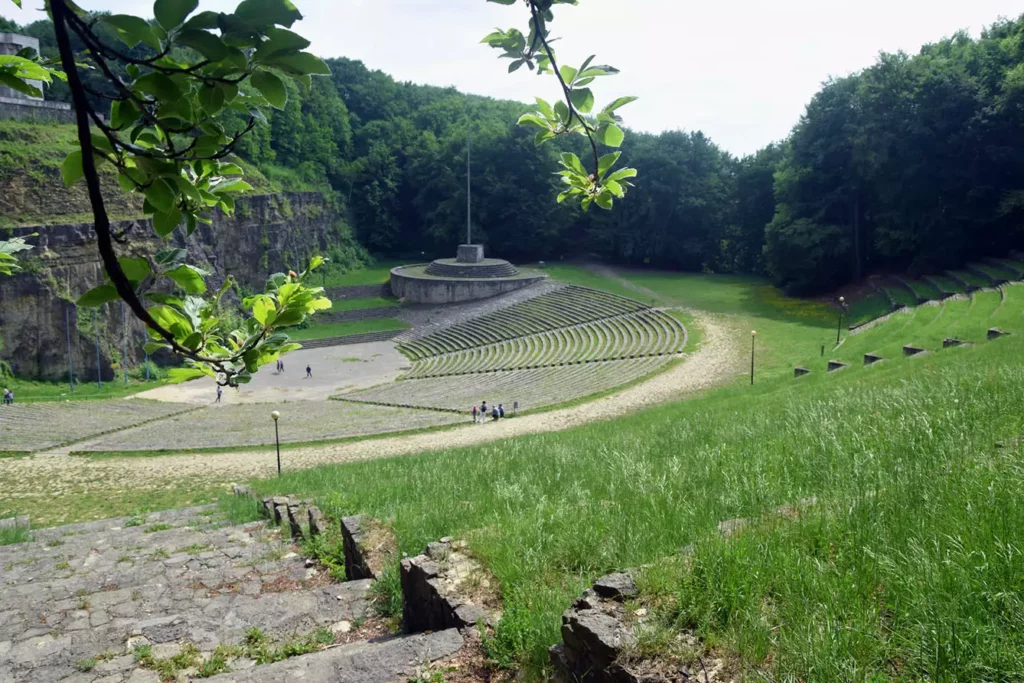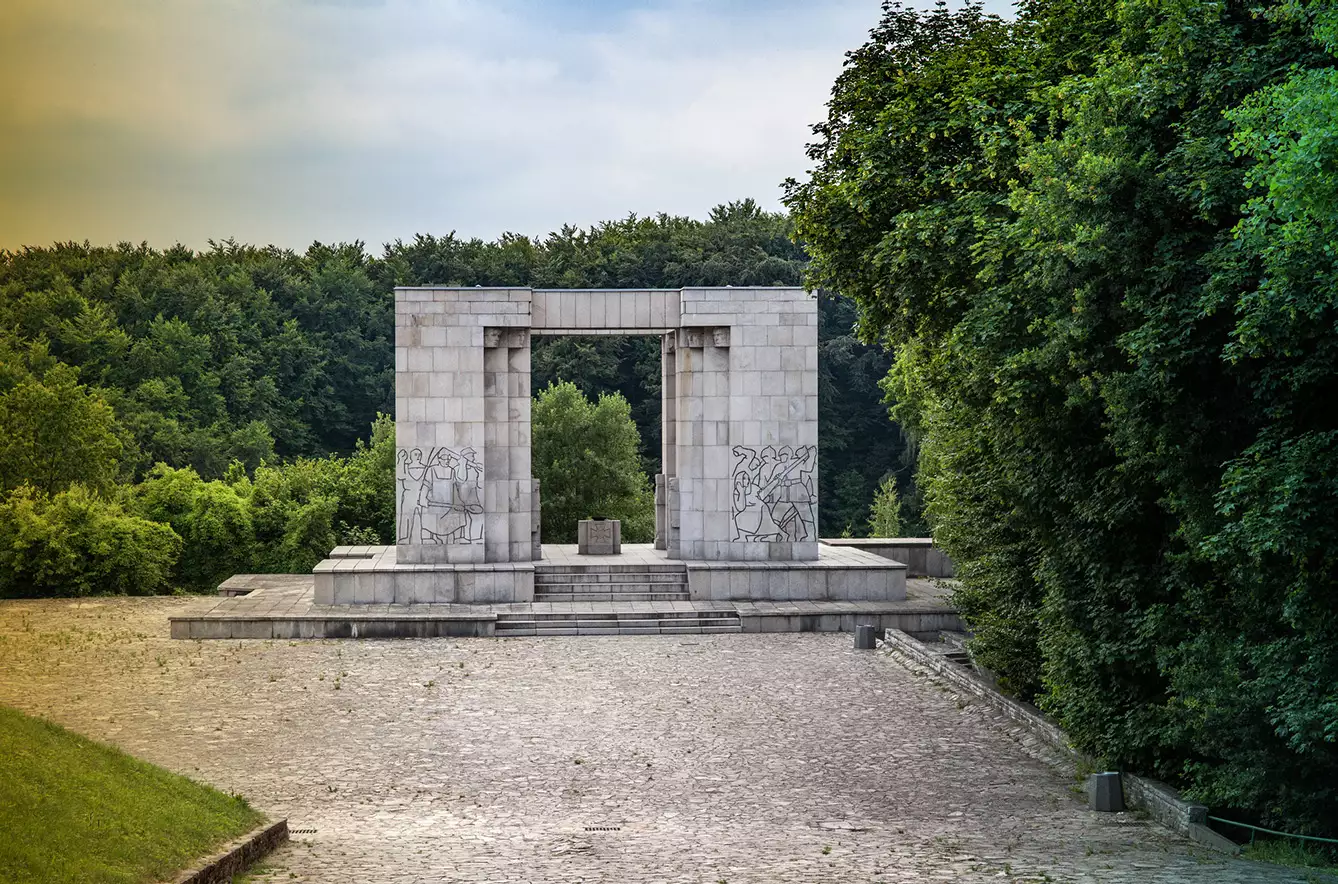If, when looking for the center of Europe, you try to look beyond geometry and boundaries and turn your eye to the symbolic aspect of the search, the Silesian region is a good candidate. Most of Silesia is now part of Poland; while it has changed political associations and cultural influences throughout the centuries, even today, the region proudly displays its unique heritage and history.
St. Anne’s Mountain Monument denazified
One visible example of this complicated history is on St. Anne’s Mountain (Polish: Góra Świętej Anny), where Nazis erected a colossal monument to commemorate the 1921 Battle of Annaberg.
As World War I came to an end, the old world of empires was destroyed; however, the formation of a new European order was far from a simple process. During the turmoil, the fight over where to set the border between Germany and Poland led to three Silesian Uprisings. One battle in the third uprising took place in May 1921 in the region of St. Anne’s Mountain, which rises several hundred meters above the eponymous village.
Fighting for the German side was a volunteer army consisting of demobilized soldiers. Several later went on to become notable Nazi officials, and the army itself was used as a shining example of the resilient German spirit during Hitler’s rise to power. In 1934, the Germans, having acquired a quarry on St. Anne’s Mountain (*whether the acquisition was thanks to the donation of a local countess or if it was confiscated is still unclear), started to build an arena.
The Nazi outdoor arena
Called a “Thingplatz” in German, it was a multi-disciplinary outdoor arena harkening back to ancient governing assemblies in German societies. “Thingplatzes” briefly gained popularity in Germany in the 1930s with hundreds planned (though on a few dozen actually built), and Nazis would later use them as the settings for their highly symbolic and theatrical political gatherings.
The amphitheater could fit as many as 50 thousand people, and overlooking it was a mausoleum, where Freikorps soldiers were buried. The monuments were decorated with tales of the history of German humiliation and rise to power, a narrative frequently employed by the Nazis. The area also featured a youth hostel with almost 200 spaces.

When the Red Army took over in January 1945, the mausoleum was destroyed, though the monument remained. Only a year later, the newly formed Polish government decided to rebuild it in honor of the fallen Polish soldiers. Later the narrative of the monument was altered to underline Polish efforts to keep Silesia.
The round temple, although planned, was never rebuilt. Famous Polish sculptor Xawery Dunikowski added four pillars in the spirit of solidarity between farmers and workers, the supreme role of the Soviet Union, and the struggle for world peace. But the commemoration of the fallen Uprising fighters remains in the central obelisk.
The peace-promoting role of the amphitheater only came later in the 1990s, when events underlining the “Polishness” of Silesia were replaced with acts of international friendship and rock concerts. Sometimes even monuments need time to find their true identity.







